A new fleet of robots and drones designed to test for chemical agents, provide 3D mapping and identify casualties have been put through their paces by troops, police officers and scientists for the first time.
In a release, the Ministry of Defence say that the aim of the research, named Project Minerva, is to reduce the risk to emergency services and front-line troops attending incidents or operations involving hazardous chemical or biological materials.
The recent trials, which took place at Gloucestershire Fire Service College, saw concept drones and robots thrown into simulated contaminated scenarios in both UK homeland and battlefield environments. The technology was tested against the speed and accuracy of human response teams supported by specialist DSTL scientists, the military, police and fire services.
Defence Secretary Gavin Williamson said:
“Following the reckless nerve agent attack in Salisbury this year, we have seen the bravery and professionalism of our Armed Forces, emergency services and MOD scientists. They have worked tirelessly to investigate and clean up deadly contaminated areas. This project will ensure we stay at the forefront of dealing with such heinous attacks, whether on our streets or on foreign battlefields. We are investing millions in this pioneering technology to do more to protect those who so fearlessly protect us.”
The Minister of State for Security and Economic Crime, Ben Wallace, said:
“I am excited to see the UK being on the front-foot and leading in the development of these autonomous technologies which are secure, reliable and useful for dangerous sites. The potential to protect our responders and protect the public from potentially hazardous scenes is considerable. The UK’s experience and pedigree in security means we are in a prime position to identify what is best placed to tackle the threats of the future.”

According to the Ministry of Defence, ‘Project Minerva’ was launched in September 2016 and has been supported by over £3 million in joint funding over 24 months. The project intends to bring the designs from concept to reality in an accelerated timeframe. The recent trials involved the winning concepts for phase 2 of the project.
The project is led by the Defence Science and Technology Laboratory (DSTL). It is funded jointly by the Ministry of Defence science and technology portfolio and the Home Office and contracted through the Defence and Security Accelerator (DASA) with funding from Defence Science and Technology (DST).
Peter Stockel, DSTL’s autonomy lead, said:
“These two weeks of trials see the culmination of over 18 months of work to realise an exciting vision, which could see robots and humans working together in demanding situations and potentially save lives when dealing with incidents involving hazardous substances. In this ‘technology exploration’, we’ve been working with industry and academia to rapidly advance robotic and autonomous solutions to enhance our response options and tools for the near future.
With continued involvement across Government, and demonstration with the user community, we aim to mature this emergent capability to test the ‘art of the possible’ and accelerate this into the hands of the prospective users for further operational evaluation, both for MOD and the Home Office.”
Major John Green, Military Advisor CBR Division for DSTL, said:
“The military is putting a lot of time and effort into CBRN [chemical, biological, radiological and nuclear] and Minerva could have a significant effect on our capability and potentially decrease the training burden. It is a project for everything else to build on.”
Phase 1 of Project Minerva, which ran for 6 months until July 2017, funded 18 development projects and was worth £1.37 million.
According to a release, four teams were then selected to develop their concepts further in this second phase. Just over £1.6 million total funding was awarded to the following phase 2 winners, all of which are small-or-medium-sized enterprises and academic institutions:
- BMT Defence Services (with Rescue Global, Herriot Watt and Edinburgh Universities), with Red Alert, unmanned aerial vehicles which have gas-sensing technology and 2D-and-3D mapping and modelling, all mounted on commercially-available drones to allow upgrades as drone technology evolves.
- Horiba MIRA, with a small purpose-designed ground robot, which can deploy on decontamination missions, climb stairs and ‘read’ or recognise hazardous chemical signs and symbols, exploiting cutting-edge neural network technology.
- Loughborough University (with Swarm Systems and Createc) with SceneSEARCH – a pocket-sized nano-drone – weighing in at less than 250g which has gas sensors and video and thermal imaging capability.
- Snake Eyes, by Autonomous Devices Limited and Pendar, a unique hybrid air and ground vehicle optimised for confined spaces which can relay 3D images of a space and detect chemical agents using a compact laser system.
For more information on Minerva head on over here.




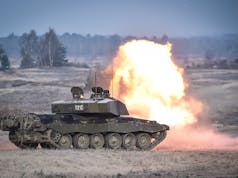
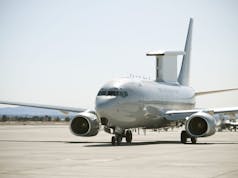

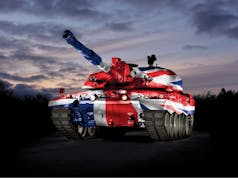

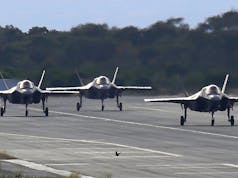
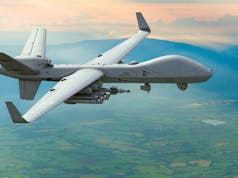

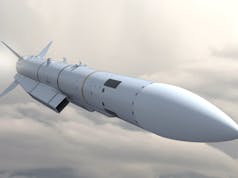

Good idea with loony putin .. The Russian midget needs keeping a eye on .
So will we actually buy these assets now?
I didn’t see any sign of an order for the soon to be reformed CBRN Regiment or the Police?
And again showing the short sighted folly of many defence cuts like removing the Joint CBRN Regiment in the SDSR 2010.
Now it’s all in vogue again and do we have the experience from that unit? The Joint NBC Wing of the RAF Regiment has undertaken the role since then but I’d read they lack some of the skills we had previously.
Also rather interesting drone concept from MBDA:
https://www.janes.com/article/83133/mbda-unveils-spectre-combat-uav-concept
Looks vulnerable to plodding AAA?
Lol! That should be opposing.
Good old plodding AAA, sounds like something straight out of Dad’s Army. Anyway now I’ve had a little chuckle (thanks Daniele), I guess it depends how you’re using it. If you can launch it from a small FOB or even in the field it could add some quick and 0 risk fire support. If using that way it then becomes a case of how much it costs, how light is it and how easy is it to use.
By tilt wing I assume it’s mode of flight is like the V22?
I guess so.
Aside from ready quick close air support I think the swarm concept from these could be an interesting way to go. It would certainly give us something a little bit unique on the battlefield, although you’re right about the vulnerability to AAA. Cost will be a big factor.
And weight as you say. How many RLC trucks needed to organise this swarm?
Some sort of dedicated launcher vehicle spitting them out like a MLRS???
It’s all a bit mind boggling.
I much prefer a return to proper artillery with smart munitions. Not enough emphasis on this now IMO.
The RA has been cut to ribbons.
I actually hadn’t considered that. Much cheaper option surely, develop/rebuild what we already have. The problem is the powers that be have their minds fixed on the mobile strike brigade and think artillery doesn’t fit.
Why not upgrade or produce something similar to the AS-90, get actual numbers up to where they need to be, although I’ve heard they can be a right git to maintain and change out engines etc in the field. Buy more Chinooks to lift the L118 guns we have left too? I don’t have all the answers but there’s certainly no brainers in there.
I think a new emphasis on artillery would be cheaper than fixed close air support?
We have Chinooks. Almost 70 and the largest fleet outside of the US. We lack the crews for them so still only 3 front line squadrons.
The Strike Brigades are currently equipped with Light Gun, a mere 12 to a regiment, operated by 3 and 4 Regiments RA. Regiments used to have at least 18 guns, 6 per battery, sometimes more.
12 guns of 1970s vintage do not make for impressive fire support for what’s meant to be the British armies vanguard.,
There is a plan to equip them with more modern wheeled SP artillery but whether this ever materialises who knows.
Interesting. Definitely a gap there. According to the Royal Artillery bit on the army website the MLRS has the longest range and accuracy out of all of our available artillery (hardly a selling point I know). I think I may do some digging as to how old and reliable the system is and compare to other nations options.
For some reason I thought we had far fewer Chinooks than that, maybe I misread an article that was talking about crews somewhere??
I thought we had around 48 before the extra 14 Chinooks arrived. Which should of course have been 22.
So 62 not 70, my error.
Whatever, a decent force.